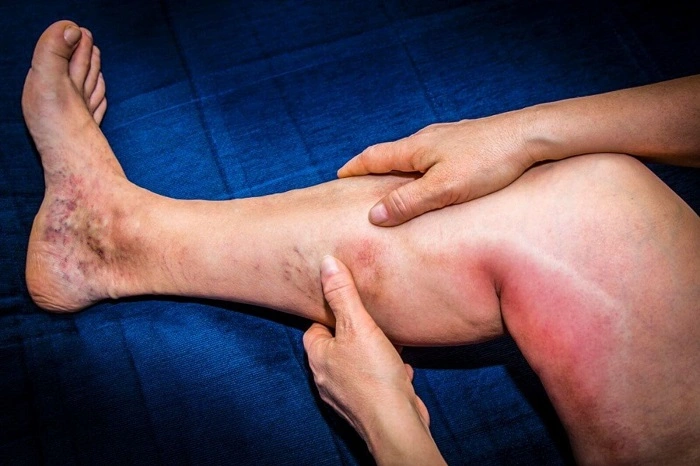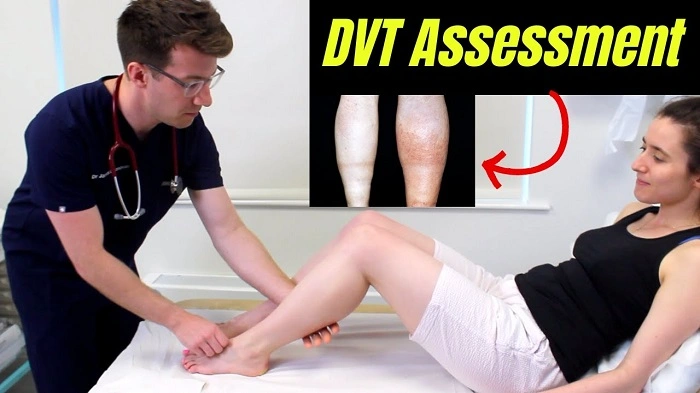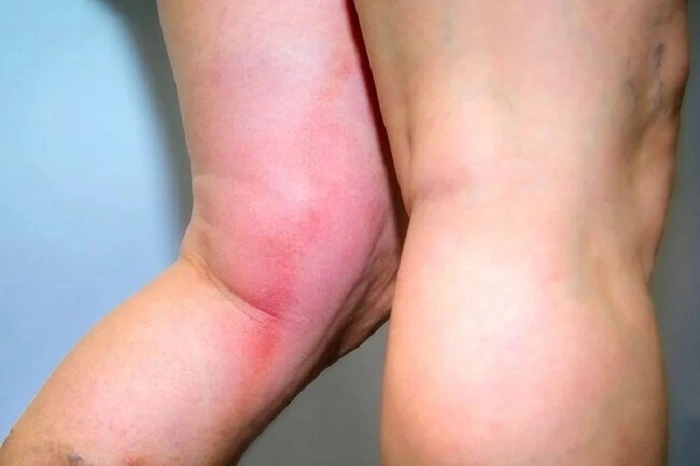Every human being has experienced fear of their health at one point or another throughout their lifespan. One of such conditions among them is a blood clot in the leg or deep vein thrombosis (DVT). Which scares and puzzles many. Most people wonder if you can die from a blood clot in your leg? The quick answer is yes, but not always so. Harmless blood clots can be treated. There are others which, left untreated, will be at risk and even deadly.
Knowledge regarding how blood clots, the symptoms involved, and what you can treat them with can literally mean the difference between a safe recovery and otherwise deadly medical condition.
What Is a Blood Clot in the Leg?
Leg blood clot is when blood becomes thicker and lumps together in one of the deep veins, normally the calf or thigh. They call it deep vein thrombosis, or DVT.
Your blood flows freely in your veins. At times, depending on low circulation, trauma, or other disease, the blood clots. The clot will interfere with the flow of blood and cause swelling, pain, or redness in the leg.
The real threat is when the clot dislodges and migrates through the circulatory system. If it can reach the lungs then a pulmonary embolism (PE) will be created. Which is a highly dangerous, life-threatening condition.
In fact, the leg clot can be life-threatening if it detaches. And it is carried into the lungs, heart, or brain. That is the reason doctors warn patients against ignoring symptoms.
When it is carried to the lung, the blood clot may impair oxygen supply. It results in chest pain, shortness of breath, and death.
When it is carried to the heart, it will cause a heart attack.
If taken to the brain, it will cause a stroke.
The best part is that most of the clots present in the blood can be treated if it’s diagnosed in time. By taking the medicine and the modification of lifestyle, the majority of the patients recover from the disease without any side effects.
Symptoms of Blood Clot in the Leg

It is very important to notice the first signs of the blood clot. Some of them are:
- Swelling in one leg (in both legs rarely)
- Cramp or pain, which first arises in the calf
- Warm and swollen leg
- Red or yellow discolouration of skin
- Heavy or aching feeling in leg
Not everyone is going to have all these, but regular follow-up care and observing what happens in your body is worth it.
Symptoms of a Life-Threatening Complication
If the blood clot breaks loose and migrates to the lungs and causes a pulmonary embolism. Then the symptoms are more severe. You must seek instant medical attention if you have:
- Sudden shortness of breath
- Sudden pain in the chest that increases with deep breathing
- Sudden acceleration of heart rate
- Sudden coughing up blood
- Sudden dizziness or lightheadedness
These are signs that the clot has moved and you must be treated immediately to preserve your life.
Whose at Risk for a Leg Blood Clot?
Anyone may develop a blood clot, but there are some who are at higher risk. Greater risk factors include:
- Bed rest or sitting for a long period of time (such as on extended air travel or bed rest)
- History of recent trauma or surgery, particularly of the hip or leg
- History of pregnancy and childbearing in relatives
- History of use of birth control pills or hormone replacement therapy
- History of blood clots in self or first-degree relative
- Being overweight or obese
- Tobacco smoking
- History of chronic disease such as diabetes, heart disease, or cancer
- Older age (with increasing age)
Although not all clots are deadly, clots are deadly if left untreated. The physicians affirm that hundreds of people lose their lives annually due to blood clots developed and transported to the lung.
The most significant fact is that in the majority of cases, death can be prevented with an early diagnosis and cure. The quicker you have a physician, the higher your chances of survival.
How Are Leg Blood Clots Diagnosed

Some of the exams that doctors use to screen for DVT include:
- Ultrasound: Most widely used exam, which is founded on the utilization of sound waves to track the clot.
- Blood test (D-dimer): Helps detect clotting of blood.
- MRI or CT scan: Used in more complex cases to scan deeper into the veins.
Also Read: Downtown Health Plaza: Providing Quality Health Care to the Masses
Treatment of a Leg Blood Clot
Treatment is to keep the clot from growing larger, but not dislodge, and not create new clots. The majority of their treatments are:
- Blood thinners (anticoagulants): Drugs that stop clots from growing and slow down new clots from forming.
- Clot-dissolving drugs (thrombolytics): Urgent situations where the drug is injected in order to dissolve harmful clots rapidly.
- Compression stockings: Special stockings to help blood circulate better and prevent swelling.
- Lifestyle change: Diet, exercise, and avoiding cigarette smoking reduce the risk of recurrence.
- Filters: Occasionally doctors insert a filter into the vein so that the clot will not be carried on to the lung.
Can You Prevent a Blood Clot in the Leg?
Yes, you can prevent most leg blood clots by doing some simple things. Prevention is especially important if you are at risk. Some of them are:
- Exercise and do not sit for hours on end.
- If you must fly, stand up and walk every two or three hours.
- Drink water as often as you can so the blood continues to circulate.
- Wear compression stockings if your physician recommends this.
- Try to be as close to a healthy weight as you can.
- Quit smoking.
- Follow your doctor’s orders after surgery or after a prolonged hospital stay.
Living with a History of Blood Clots
If you’ve had a clot before, your risk of getting another is higher. That means you need regular doctor visits, and long-term use of blood thinners. You have to maintain lifestyle changes. Many patients live long. Healthy lives after a clot by carefully following medical advice.
FAQs
Can a leg blood clot clear up on its own?
Occasionally these small clots will prevail and heal, but do not wait. Always get yourself in to be seen by a doctor and get it treated.
How fast can the blood clot in the leg kill you?
It depends. Some of them will not go anywhere for weeks, but some will move and kill you with a pulmonary embolism in hours or days.
Is walking allowed if you have a leg blood clot?
Walking as a light workout is to be done but only after talking with your doctor in advance. Rest and exercise are complementary.
Can you die in your sleep from a blood clot?
Yes, if your body rolls over when sleeping and your body moves the clot into your lungs, you can die instantly. This is not a likely occurrence.
Does aspirin stop clots?
Aspirin will benefit other individuals, but in DVT, more potent anticoagulants are usually employed. Individuals should only take drugs as prescribed by a physician.
Why Early Treatment is Important
Leg blood clot does not always lead to death but kills in a few days. Most individuals do not respond to symptoms until it is too late. If you keep symptoms in mind, you can be administered early medical care before complications set in.
Conclusion
So is it possible to die from blood clot in leg? Yes—but not if ignored or untreated. Due to modern medicine, the vast majority of people with DVT live in peace and uneventfulness.
Pay attention. Learn the warning signs, listen, and get to your doctor right away if you believe you have a clot. Your swelling or pain in your leg might be minor, but maybe your body is trying to get your attention about something hazardous.
Your life is always worth fighting for. Not waiting can make an otherwise fatal disease a manageable sickness—and allow you to live out the rest of your life safely and in normalcy.








